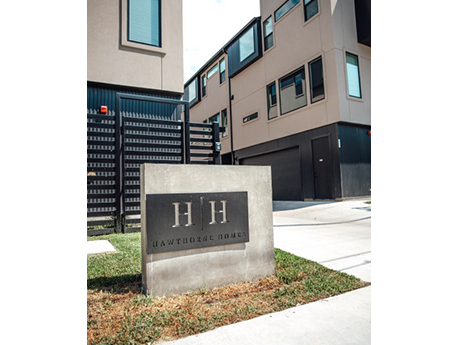By Andrew Welker, founder and CEO, Welker Properties
Institutional investment in the single-family housing market is waning as high interest rates show no sign of letting up.
For the first time in years, corporate investors looking to borrow money are having difficulty finding cash flow with current interest rates. As a result, some institutional investment firms are hitting pause on real estate portfolios or pivoting to all-cash deals on low-priced housing stock. This shift makes it more difficult for individual first-time homebuyers to get in on the game.

With buyers and sellers holding out for better returns, a shrinking debt market isn’t helping with the supply shortage. According to data supplied by Freddie Mac and analyzed by Axios, the country needs nearly 4 million units — both for rent and for sale — to meet demand based on current rates of household formation. There simply isn’t enough housing being built to meet demand.
Enter build-to-rent (BTR), an asset class that’s skyrocketed in popularity in recent years as COVID-19 pushed people out of cities and affordable homeownership further from their reach. Offering the four-walled privacy of a single-family unit and the conveniences of multifamily construction, BTR is community-style living for modern times.
Meeting Demand, Ensuring Returns
For investors large and small, the BTR model presents a peerless opportunity for growth. Rents at BTR properties typically average about 20 percent higher than multifamily market rates, ensuring that units will generate positive returns after development costs and debt obligations are met.
Barriers to entry are low — if you can secure financing, there’s a way for everyone to play this game. Lenders may be unwilling to give 80 percent leverage on a multi-story apartment complex in the current climate; the odds of securing financing are better for a mom-and-pop outfit looking to test the BTR space with 10 single-story units on a few acres.
Where BTR helps residents is in meeting demand for traditional single-family homes, which are in extremely short supply across the country. A one-story rental home with no shared walls, a backyard and a covered parking option ticks all the right boxes for a large cross-section of the population — not just people priced out of homeownership. In addition, these projects provide more housing faster, as opposed to relying on newly developed single-family homes for sale.
Flexible Living via Local Market Knowledge
BTR is not a one-size-fits-all solution, and its target demographic echoes this need for flexibility.
Young married couples looking to upgrade, empty-nesters wanting to downsize, divorcees who host their children on weekends and new hires moving their families into high-job growth areas who want to scope out the neighborhood before committing to a purchase — BTR projects can make sense for all of these groups. Having one’s personal space while enjoying the amenities of a rental community, such as regular lawn maintenance, has multi-generational appeal.
Another unique aspect of BTR is its amenability to local investors. Past trends have shown that there’s no such thing as absentee ownership. Those investors who have tried to buy, manage and sell nationwide from afar — especially in the single-family acquisition arena — have failed as a result of not knowing their market. Investors need to frequent the market and have someone from their team who they trust on the ground once operations take off, and preferably on a permanent basis.
Investors also need to decide which onsite staffing and lead-generation solutions works for them, whether that means handing operations off to a third-party management company or skipping the presence of a leasing and amenity office base entirely.
At the end of the day, BTR is a community build; you get out what you put in. Having the right people in place to ensure resilience and drive awareness can help investors enhance their returns once the foundation is laid.
— Welker Properties is a multifamily developer based in Dallas, Texas.


